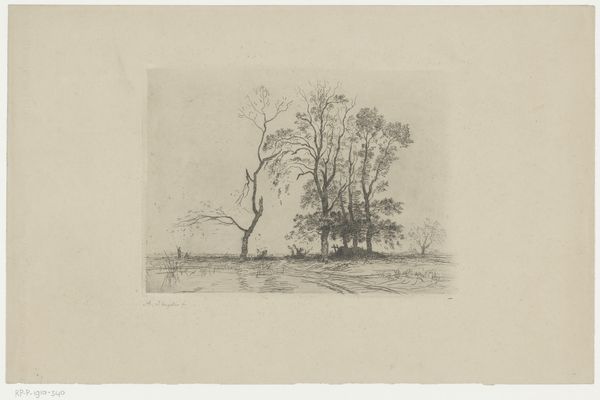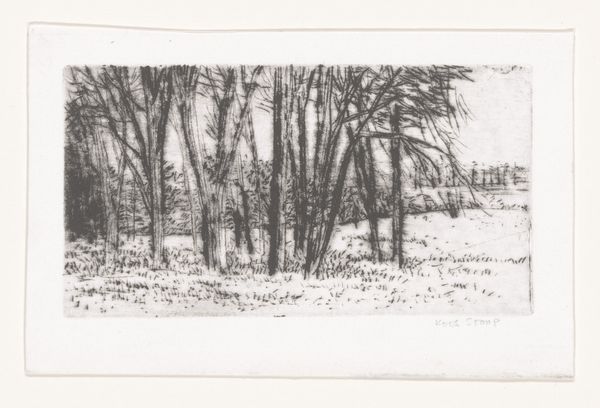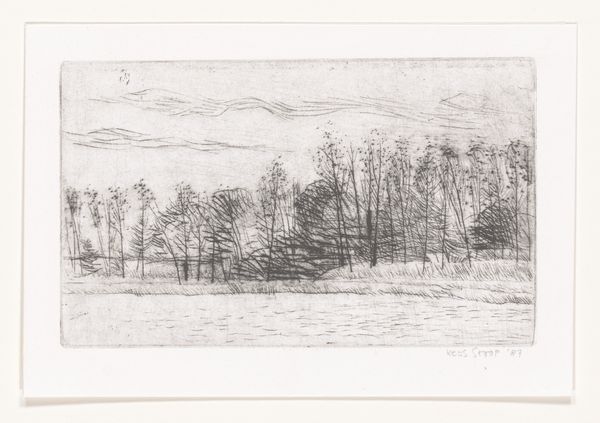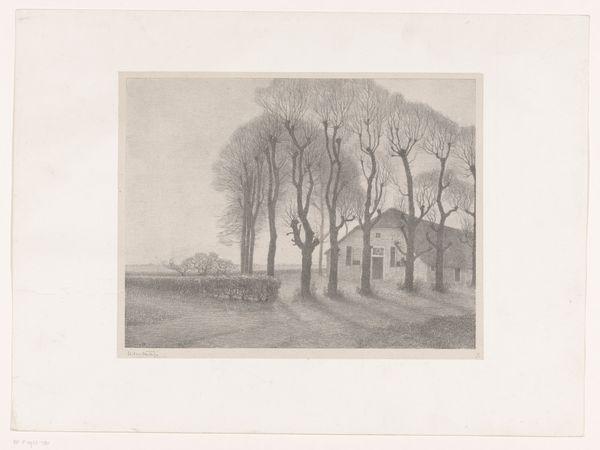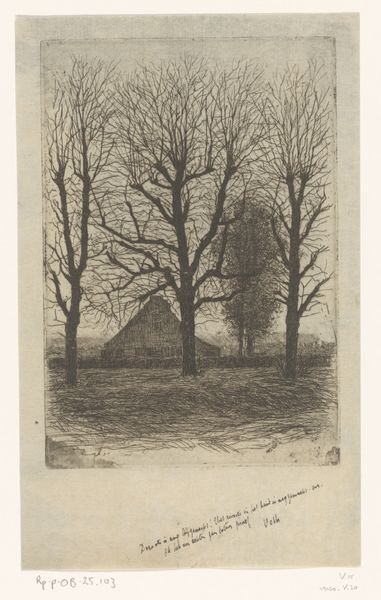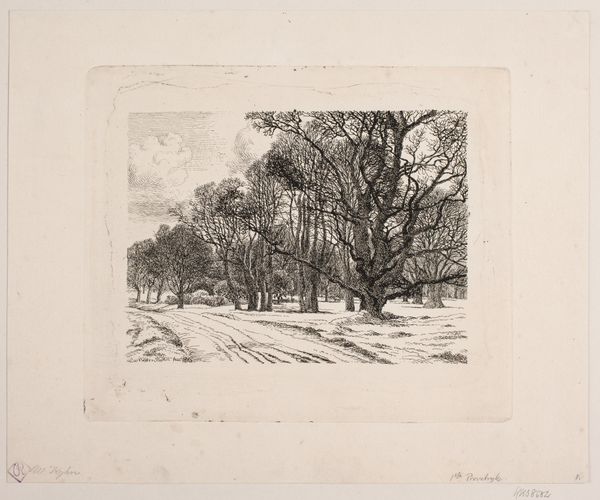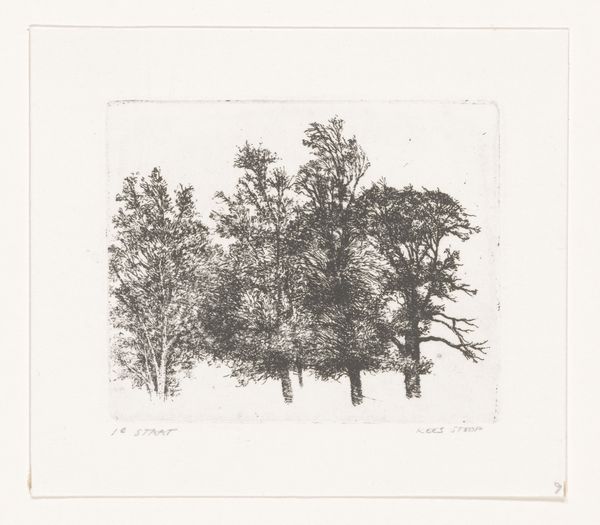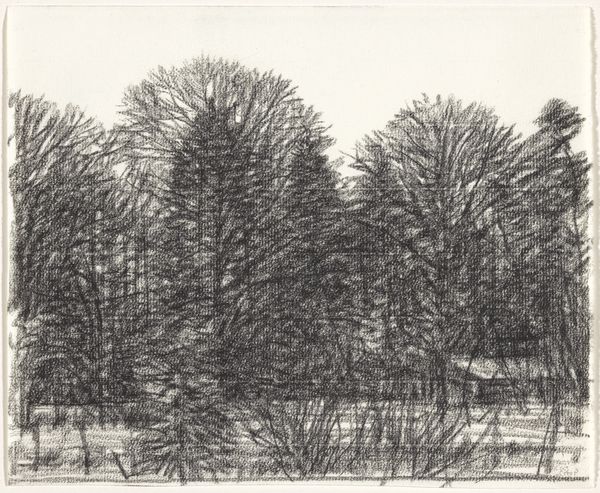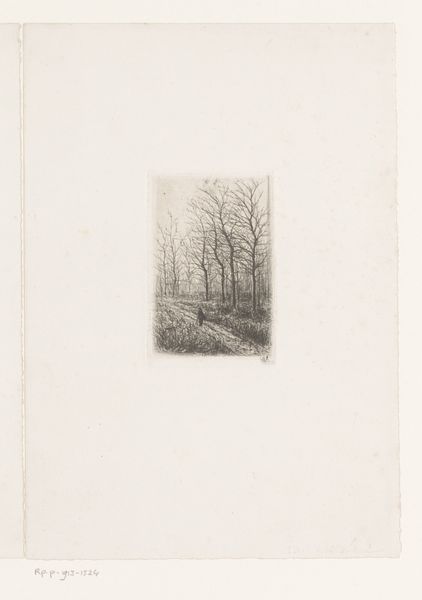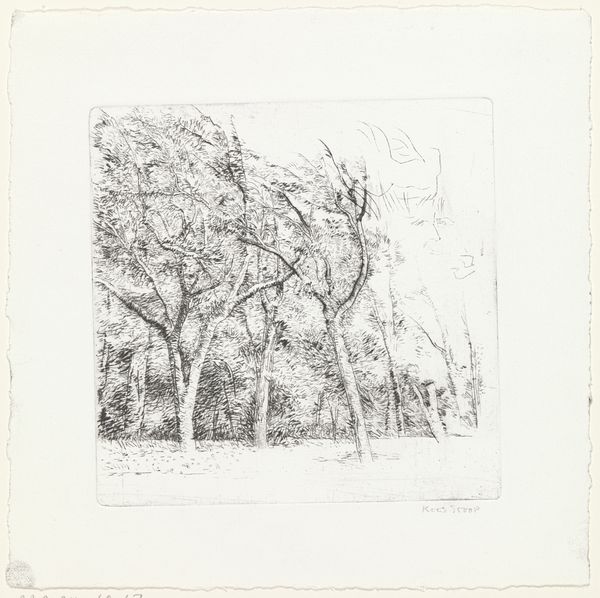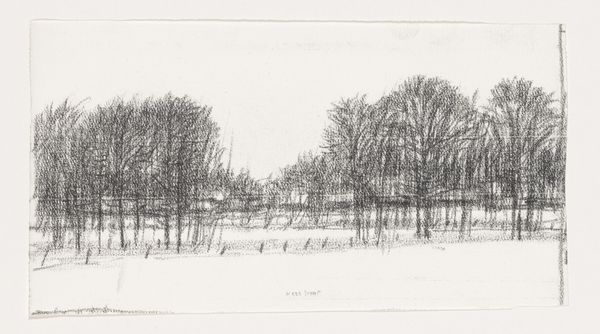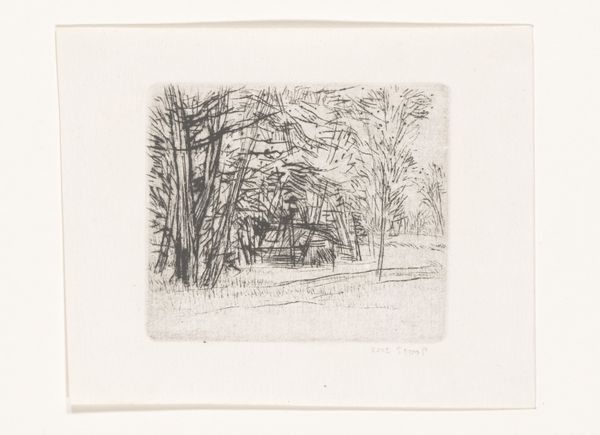
drawing, print, etching, paper
#
drawing
# print
#
etching
#
landscape
#
etching
#
paper
#
monochrome
Dimensions: height 156 mm, width 165 mm, height 79 mm, width 144 mm
Copyright: Rijks Museum: Open Domain
Curator: "Kale bomen," or "Cabbage Trees," is what Kees Stoop titled this piece. Its date is a little vague, sometime between 1944 and 1990. It's currently part of the Rijksmuseum's collection. He used etching to produce this serene landscape in monochrome. Editor: Immediately, I feel a certain starkness. The trees stand bare against what seems like a washed-out sky. There's an austerity, a simplicity, that is very appealing. A silence seems to permeate it. Curator: Stoop had a knack for distilling the essence of the Dutch landscape, didn’t he? After World War II, there was a lot of pressure to rebuild the country, literally and figuratively, but Stoop and other artists of his generation also felt it was necessary to honor what they had before the war and that which remained after the war. This landscape really embodies a commitment to what one already has. Editor: Yes, this is a very human-scaled landscape, with nothing particularly dramatic in sight. It feels ordinary but also deeply felt. And you can see the marks of the artist's hand, the subtle imperfections in the etching that somehow only emphasize its reality. There's a vulnerability here, too, don’t you think? Curator: Most definitely. The use of etching creates an interesting effect. Stoop's decision to render this scene in monochrome adds to the understated, pensive atmosphere. Etchings inherently provide an antique veneer due to their association with traditional printing methods. I wonder about that. Editor: I’m curious what inspired him to focus on this subject. The “Cabbage Trees”— it sounds whimsical and rustic. What do they stand for, those trees, in all their stripped-down vulnerability? Are they resilience incarnate or is it just about cabbage? Curator: I don't think we will ever be able to answer that exactly. I like how you put it—resilience incarnate. Stoop's legacy really resides in offering glimpses into his contemplation of nature and the effects of war and industrialization on his sense of what remains pastoral. It offers some very gentle reminders to modern-day consumers of art. Editor: Well, that gives me something to chew on. It's so subtle, so quietly powerful. Thanks for guiding us. Curator: The pleasure was all mine!
Comments
No comments
Be the first to comment and join the conversation on the ultimate creative platform.
